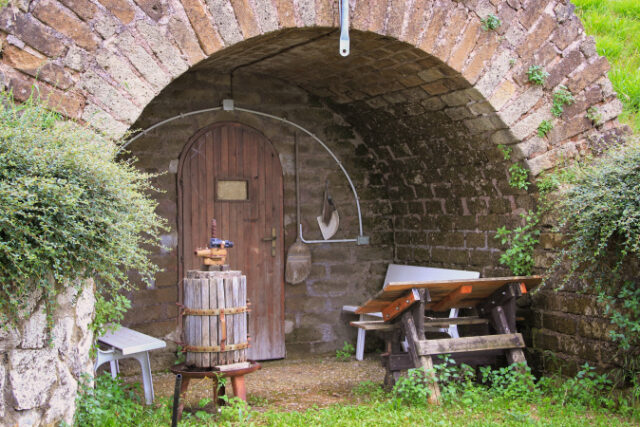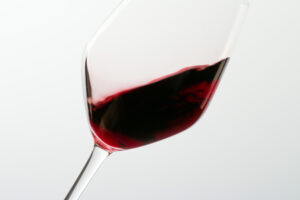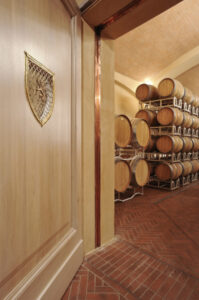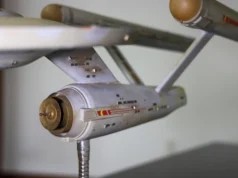
By Tom Marquardt and Patrick Darr
When the subject of Italian wine is brought up, it’s hard not to think first of chianti, a wine that has been with us for generations. First documented in the 14th century, chianti has been a mainstay of Italian dinners whether the fare be a plate of bolognese sauce on pasta or veal piccata. But despite its lasting popularity, chianti has struggled to achieve the recognition of other Italian wine regions.

But by the mid-1980s, things began to change. White varietals were greatly reduced and more foreign varietals, such as cabernet sauvignon and merlot, were allowed. Lower yields and smaller barrels led to a drive for quality by a new generation of winemakers who eschewed the philosophies of their fathers.
Sangiovese, the foundation grape in chianti, is not the easiest grape to grow. Because it doesn’t always fully ripen, the acidity can be high. It needs help from other grape varieties, such as canoilo and coroino. Winemakers there rejoiced when cabernet sauvignon and merlot were allowed.
Despite what you may think, Tuscany ranks 7th in Italy in regards to wine production – lower than Piedmont – yet it’s probably the most ubiquitous wine from this country. It’s certainly one of the least expensive, making it a popular choice for home-cooked meals and in cheap Italian restaurants where it is served on red-checkered tablecloths.
Finding a quality chianti can be an exhausting exercise with more failures than successes. We have found the exercise easier when we recognize a quality producer, such as Antinori, Fontodi, Badia a Coltibuono and Castello di Monsanto.

The family is focused on organic farming – wines from this vintage will be made entirely from organically grown grapes.
Here are some of the great values we liked from this producer:

Villa Cerna Chianti Classico Riserva DOCG 2018 ($35). One of our favorites of the tasting, this reserve, made of 95 percent sangiovese, spends more time in barrel and then an additional 9 months in bottle. The result is a more complex and enduring wine with beautiful floral aromas, red berry notes, balanced acidity and palate length. The vineyards from this ancient estate are more than 800 feet in elevation.
Val delle Rose Aurelio Maremma Toscana DOC 2018 ($30). A little cabernet franc is blended with this delicious and round merlot with dark fruit, pepper and chocolate notes. Bracali said she has to pay attention to the grape’s ripening because she wants to preserve the acidity. “We want it to be fresh,” she added.
Val delle Rose Poggio Al Leone Riserva 2019 ($35). Sangiovese is the primary grape in this region of Maremma. It ages for a minimum of 12 months in barrique barrels. Ripe blackberry and dark cherry notes.
These are wines worth exploring.
Other Italian gems
Castelli del Grevepesa Clemente VII Chianti Classico DOCG 2018 ($17). The 10 percent merlot in this blend rounds off the acidic sangiovese to make this wine a delicious complement to savory dishes. Blackberry and dark cherry flavors with good spice and

hints of hazelnut and vanilla.
Nestore Bosco Montepulciano d’Abruzzo DOC 2017 ($13). We think of winter stews when we think of montepulciano and now is the time to think stews. Blended with 15 percent cabernet sauvignon, this wine has more heft with big blackberry and jammy raspberry notes. Great value.
Caldora Montepulciano d’Abruzzo DOC 2020 ($15). Full bodied with fine tannins and loads of plum and blackberry flavors with a hint of vanilla.
Graticciaia Agricole Vallone Salento Rosso IGT 2016 ($50). Made from 100 percent negroamaro grapes that are dried on mats in attics before crushing and fermentation. The deep color and intense fruit notes reminded us of primitivo that we have tasted. Berry and plum notes with a hint of licorice and chocolate this wine is a blockbuster to sample. Pair with bold intense meat dishes.
Badia a Coltibuono Chianti Classico Riserva DOCG 2016 ($36). This producer makes a great Chianti Classico for $20, but we like the complexity and richness you get from the aged riserva. A bit of colorino, canaiolo and ciliegiolo grapes are added to provide more color and body to the sangiovese. Complex and fresh dark fruit.
Republished with permission
Tom Marquardt and Patrick Darr have been writing a weekly wine column for more than 30 years. Additional Wine reviews on MoreAboutWine
All photos are randomly selected and do not indicate any preferred wine. Listed prices are subject to change and do not include tax or shipping.
You can send questions to Tom Marquardt mailto:marq1948@gmail.com
Always drink responsibly![/vc_message]












